#Appotronics
Explore tagged Tumblr posts
Link
#AdvancedLaserPhosphorDisplay#Appotronics#AppotronicsALPD#automotivelaserdisplay#BMWiVisionDee#CeresHoloFlext#CeresHolographics#CES2025#Futurride#heads-updisplay#holographicwindshield#HUDs#in-cardisplays#sustainablemobility#transparentheads-updisplay
0 notes
Text
For the first time in Appotronics, the optical system of the entire vehicles in Shanghai Auto Show
For the first time in Appotronics, the optical system of the entire vehicles in Shanghai Auto Show

View On WordPress
0 notes
Text
Formovie تكشف عن جهاز عرض Theatre Premium بتقنية الإسقاط القصير للغاية
أعلنت شركة Formovie عن جهاز عرض جديد بتقنية الإسقاط القصير جدًا�� وهو Formovie Theatre Premium، والذي يُعد تكملة لمسرح Formovie السابق. من المتوقع طرح هذا الجهاز الجديد، الذي يتميز بدقة 4K وتقنيات متطورة، للطلب المسبق ابتداءً من 28 أكتوبر. يعتمد جهاز العرض على تقنية ALPD RGB+ 4.0 الليزر الثلاثية التي طورتها شركة Appotronics، الشركة الأم لـ Formovie. تقدم هذه التقنية تغطية 107% من التدرج اللوني…
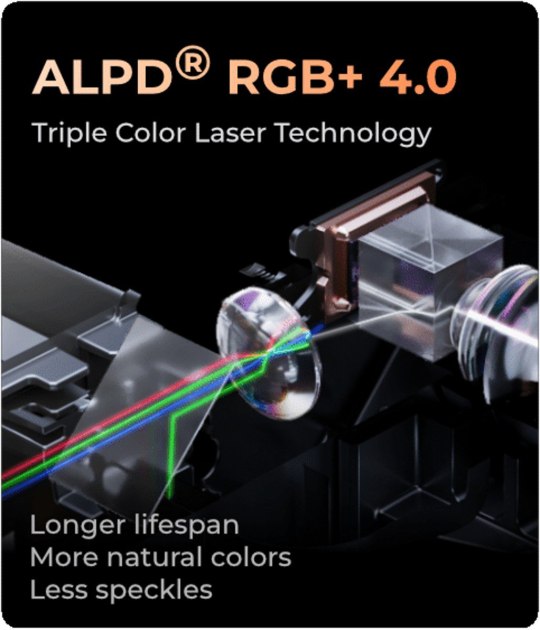
View On WordPress
0 notes
Text
[ad_1] Formovie, a Mi ecosystem company jointly established by Appotronics Corporation and Xiaomi Technology, has launched its avidly anticipated Cinema EDGE projector. Distributed in India by Aytexcel Pvt. Ltd., the official representative for the Formovie brand in the country, this premium laser device promises an enhanced viewing experience with its innovative design and futuristic technical capabilities.Formovie Cinema EDGE Laser TVThe official launch of the Cinema EDGE projector has been announced on 15th of October 2024.The revolutionary product belongs to the EDGE series and promises exceptional picture quality, stunning brightness and next-generation specifications for an immersive viewing experience. The direct integration of Google TV and Netflix eliminates the need for external devices, enabling users to watch all their favourite shows and movies straight from the projector."The home entertainment segment in India is undergoing a major transformation. In keeping with these shifts, the brand-new Cinema EDGE projector promises to turn your living room into a state-of-the-art home theatre. Unlike traditional projectors that require a capacious space to operate, this advanced device delivers stunning, high-definition visuals even in compact places. Whether you are a fan of laser TVs, a home theatre enthusiast, or just interested in cutting-edge projection technology, the Formovie Cinema EDGE 4K UST Laser TV projector is sure to impress," says Sushil Motwani, Founder of Aytexcel Pvt. Ltd.The Formovie Cinema EDGE incorporates the latest Advanced Laser Phosphor Display (ALPD) technology with 4K resolution, offering vibrant and lifelike colours. It also features MEMC technology, which adds a new dimension to action movies, sports events, and gaming sessions by delivering fast-moving images with exceptional sharpness. The deep dark tones and bright colours will look flawless next to each other with the aid of a 3000:1 contrast ratio, HDR10 and HLG (Hybrid Log-Gamma).The Formovie Cinema EDGE's ultra-short throw properties allow it to achieve a throw ratio of just 0.23:1, transforming even the smallest room into an entertainment zone. This means that users need only a 49 cm distance to project a 150-inch screen.Delivering rich and dynamic audio for a complete cinematic experience, the device is equipped with dual-certified DTS-HD and Dolby Audio support. Powered by 2 X 15-watt speakers from global leader Bowers & Wilkins, these immersive acoustics deliver a full-bodied, natural sound for an unparalleled listening experience.Integrated with Google Assistant, the voice button on the remote control can help users operate the device effortlessly. The EDGE projector also encompasses a variety of connectivity options, including HDMI, USB and wireless capabilities, ensuring compatibility with a wide range of devices.With dimensions of 456x308x91mm, and an elegant design, it is one of the smartest and most aesthetically pleasing portable projectors. And thanks to its Wi-Fi 6 technology, it provides faster internet connectivity for uninterrupted streaming and browsing.The Formovie Cinema EDGE is more than just a projector; it is truly a gateway to a whole new world of entertainment. Priced at Rs 285000, it will be available at Formovie India Website and Amazon.in. Home theatre enthusiasts can also experience the features firsthand at Formovie experience lounges. [ad_2] Source link
0 notes
Text
[ad_1] Formovie, a Mi ecosystem company jointly established by Appotronics Corporation and Xiaomi Technology, has launched its avidly anticipated Cinema EDGE projector. Distributed in India by Aytexcel Pvt. Ltd., the official representative for the Formovie brand in the country, this premium laser device promises an enhanced viewing experience with its innovative design and futuristic technical capabilities.Formovie Cinema EDGE Laser TVThe official launch of the Cinema EDGE projector has been announced on 15th of October 2024.The revolutionary product belongs to the EDGE series and promises exceptional picture quality, stunning brightness and next-generation specifications for an immersive viewing experience. The direct integration of Google TV and Netflix eliminates the need for external devices, enabling users to watch all their favourite shows and movies straight from the projector."The home entertainment segment in India is undergoing a major transformation. In keeping with these shifts, the brand-new Cinema EDGE projector promises to turn your living room into a state-of-the-art home theatre. Unlike traditional projectors that require a capacious space to operate, this advanced device delivers stunning, high-definition visuals even in compact places. Whether you are a fan of laser TVs, a home theatre enthusiast, or just interested in cutting-edge projection technology, the Formovie Cinema EDGE 4K UST Laser TV projector is sure to impress," says Sushil Motwani, Founder of Aytexcel Pvt. Ltd.The Formovie Cinema EDGE incorporates the latest Advanced Laser Phosphor Display (ALPD) technology with 4K resolution, offering vibrant and lifelike colours. It also features MEMC technology, which adds a new dimension to action movies, sports events, and gaming sessions by delivering fast-moving images with exceptional sharpness. The deep dark tones and bright colours will look flawless next to each other with the aid of a 3000:1 contrast ratio, HDR10 and HLG (Hybrid Log-Gamma).The Formovie Cinema EDGE's ultra-short throw properties allow it to achieve a throw ratio of just 0.23:1, transforming even the smallest room into an entertainment zone. This means that users need only a 49 cm distance to project a 150-inch screen.Delivering rich and dynamic audio for a complete cinematic experience, the device is equipped with dual-certified DTS-HD and Dolby Audio support. Powered by 2 X 15-watt speakers from global leader Bowers & Wilkins, these immersive acoustics deliver a full-bodied, natural sound for an unparalleled listening experience.Integrated with Google Assistant, the voice button on the remote control can help users operate the device effortlessly. The EDGE projector also encompasses a variety of connectivity options, including HDMI, USB and wireless capabilities, ensuring compatibility with a wide range of devices.With dimensions of 456x308x91mm, and an elegant design, it is one of the smartest and most aesthetically pleasing portable projectors. And thanks to its Wi-Fi 6 technology, it provides faster internet connectivity for uninterrupted streaming and browsing.The Formovie Cinema EDGE is more than just a projector; it is truly a gateway to a whole new world of entertainment. Priced at Rs 285000, it will be available at Formovie India Website and Amazon.in. Home theatre enthusiasts can also experience the features firsthand at Formovie experience lounges. [ad_2] Source link
0 notes
Text
Global Top 14 Companies Accounted for 93% of total Laser TV market (QYResearch, 2021)
Laser color television (laser TV), or laser color video display utilizes two or more individually modulated optical (laser) rays of different colors to produce a combined spot that is scanned and projected across the image plane by a polygon-mirror system or less effectively by optoelectronic means to produce a color-television display. The systems work either by scanning the entire picture a dot at a time and modulating the laser directly at high frequency, much like the electron beams in a cathode ray tube, or by optically spreading and then modulating the laser and scanning a line at a time, the line itself being modulated in much the same way as with digital light processing (DLP). The special case of one ray reduces the system to a monochrome display as, for example, in black and white television. This principle applies to a direct view display as well as to a (front or rear) laser projector system. Laser TV technology began to appear in the 1990s. In the 21st century, the rapid development and maturity of semiconductor lasers and other technologies gave it new advantages.

According to the new market research report “Global Laser TV Market Report 2023-2029”, published by QYResearch, the global Laser TV market size is projected to reach USD 26.9 billion by 2029, at a CAGR of 41.5% during the forecast period.
Figure. Global Laser TV Market Size (US$ Million), 2018-2029

Figure. Global Laser TV Top 14 Players Ranking and Market Share (Ranking is based on the revenue of 2022, continually updated)

The global key manufacturers of Laser TV include Hisense, Changhong, Sony, Appotronics Corp, JMGO, BenQ, LG, Haier, Epson, Samsung, etc. In 2021, the global top 10 players had a share approximately 93.0% in terms of revenue.
About QYResearch
QYResearch founded in California, USA in 2007.It is a leading global market research and consulting company. With over 16 years’ experience and professional research team in various cities over the world QY Research focuses on management consulting, database and seminar services, IPO consulting, industry chain research and customized research to help our clients in providing non-linear revenue model and make them successful. We are globally recognized for our expansive portfolio of services, good corporate citizenship, and our strong commitment to sustainability. Up to now, we have cooperated with more than 60,000 clients across five continents. Let’s work closely with you and build a bold and better future.
QYResearch is a world-renowned large-scale consulting company. The industry covers various high-tech industry chain market segments, spanning the semiconductor industry chain (semiconductor equipment and parts, semiconductor materials, ICs, Foundry, packaging and testing, discrete devices, sensors, optoelectronic devices), photovoltaic industry chain (equipment, cells, modules, auxiliary material brackets, inverters, power station terminals), new energy automobile industry chain (batteries and materials, auto parts, batteries, motors, electronic control, automotive semiconductors, etc.), communication industry chain (communication system equipment, terminal equipment, electronic components, RF front-end, optical modules, 4G/5G/6G, broadband, IoT, digital economy, AI), advanced materials industry Chain (metal materials, polymer materials, ceramic materials, nano materials, etc.), machinery manufacturing industry chain (CNC machine tools, construction machinery, electrical machinery, 3C automation, industrial robots, lasers, industrial control, drones), food, beverages and pharmaceuticals, medical equipment, agriculture, etc.
0 notes
Text
Formovie Xming V1 most likely doesn’t let you know a lot; however, this Chinese language model is a subsidiary of Formovie, an organization within the Mi ecosystem created collectively by Appotronics Expertise and Xiaomi Expertise. you may also like Anker Nebula Mars 3 Air. Formovie Xming V1 Projector Xming Projectors has launched two new projectors: the Xming V1 Sensible Projector (1080p) and the Xming V1 Extremely 4K, the primary house cinema projector with LCD panel with native 4K decision! [caption id="attachment_14499" align="aligncenter" width="750"] image(aliexpress.com)[/caption] Whereas Texas Devices and its DMD chips are broadly used within the manufacturing of suitable projectors from China, the selection to develop a 5-inch LCD panel with native 4K decision is geared toward countering this quasi-monopoly and decreasing the costs of micro-mirror chips. To be entirely exact, that is a UHD (3084 x 2160) decision and never 4K (4096 x 2160). [caption id="attachment_14500" align="aligncenter" width="736"] image(aliexpress.com)[/caption] Two producers are moving into the breach: Xming (Formovie) and Philips Projection with a future NPX926. These fashions will likely be “illuminated“by LEDs.
0 notes
Text
WEMAX Nova, the Latest 4K UHD Ultra Short Throw Laser Projector of the Ancestor of Laser TV, vs Awol Vision LTV-2500
WEMAX Nova, the Latest 4K UHD Ultra Short Throw Laser Projector of the Ancestor of Laser TV, vs Awol Vision LTV-2500
WEMAX, many friends may be unfamiliar with this laser TV brand. In fact, it is only a sub brand of laser TV ancestor company named Appotronics. ALPD technology is a patented technology of Appotronics. Appotronics, a Hidden Unicorn Company in Laser Projector Era. ALPD has developed to generation 4.0, but the latest generation of ALPD technology is only used for commercial projection technology,…
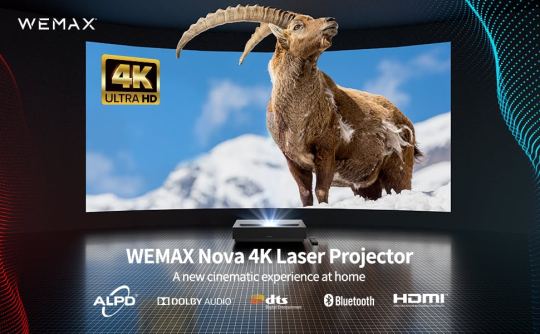
View On WordPress
0 notes
Link
#Appotronics#ARHUDs#augmentedreality#augmentedrealityHUDs#automotivehead-updisplays#CGH#computer-generatedholography#Continental#Denso#Envisics#FirstInternationalComputer#Futurride#Harman#head-updisplay#head-updisplays#HUD#HUDs#Hudway#HyundaiMobis#IDTechEx#LFDs#lightfielddisplays#ResearchAndMarkets.com#sustainablemobility#TFT-LCDs#thin-film-transistorliquid-crystaldisplays#Visteon#WayRay
0 notes
Text
Airbus and Apotronics Strategic Cooperation Ceremony Held Successfully in Shenzhen, China
Airbus and Apotronics Strategic Cooperation Ceremony Held Successfully in Shenzhen, China
Shenzhen, China, May 17, 2021 / PRNewswire / -Appotronics Corporation Ltd. (SSE Star Market listed company, code: 688007.SH) and AIRBUS China Innovation Center (ACIC) hold strategic cooperation signing ceremony in Shenzhen Did. Two major companies in the laser display industry and the aviation industry have formally formed a strategic partnership. The aviation-based laser display application…
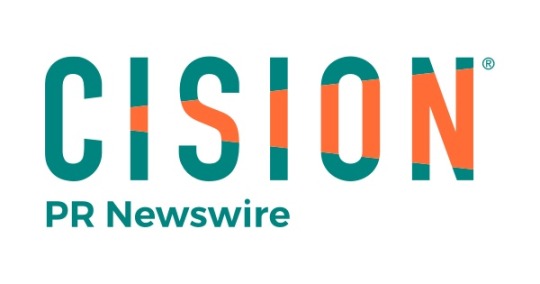
View On WordPress
0 notes
Text
Chinese inventiveness shows the weakness of the law

Intellectual property Chinese inventiveness shows the weakness of the law
Entrepreneurs struggle to retain control of their inventions
Technology QuarterlyJan 4th 2020 edition
Jan 4th 2020
AS THE DOTCOM boom was approaching its peak in 1999, Yi Li was working for JDS Uniphase, a Silicon Valley company that made lasers and optical fibres. JDS was a high-flyer, with a market capitalisation fives times the value of Apple at that time. Investors loved the firm for its role in building out the infrastructure of the internet. But when boom turned to crash JDS’s share price plunged by 99.8%. Employees whose stock options had made them paper millionaires lost it all overnight. “I got killed by the bubble,�� says Mr Li. “I was too young, too naive. But it was a very good lesson.”
The lesson was one that Mr Li would put to good use back in his native China. But even though he went on to make the fortune that he missed out on with JDS, he discovered first-hand the problems that Chinese entrepreneurs face in protecting their inventions in a nation where protections for intellectual property are nascent at best. His tussles to retain control of his inventions typify a big barrier to China’s technological advancement.
As he picked himself up, Mr Li asked himself where all the money that had poured into JDS had gone. Had it really just evaporated? He decided that, in fact, the apparent financial destruction of the company was what physicists call a phase change—the stuff was still there, but arranged in different forms. The money that had poured into the manufacture of communications equipment had made that equipment cheap, made the construction of a global internet feasible, and the future growth of internet companies a possibility. He developed a thesis for future success: in the wake of any over-investment there would always be a related opportunity to build upon its ashes in the form of newly cheap supply chains. The money that had been in JDS had flowed off towards the next generation of internet companies that its infrastructure had enabled: Google, Amazon and eBay.
Next time he saw a bubble, Mr Li was ready. It was 2004 and money had poured into the manufacture of light-emitting diode (LED) bulbs designed to illuminate rooms much more efficiently than incandescent bulbs. The price of the bulb’s fundamental component, the blue diode, had crashed. Mr Li saw that as an opportunity to develop a new kind of product: a laser projector that relied on the same supply chain that was pumping out cheap blue LEDs. At the time laser projectors were bulky and expensive because they needed three different types of laser, one to project each of the three additive primary colours of red, blue and green. But only the cost of blue laser components had crashed. Red and green lasers were still expensive.
Mr Li started thinking about how to make a laser projector using just blue light. Most cheap LED bulbs work by shining blue light generated by a semiconductor through a phosphorescent filter that absorbs it and re-emits red and green light in its place, thereby producing white light from the mixture. The same works with a laser but, because its light is so intense—1,000 times brighter than an LED—the phosphor filter burns out immediately. Mr Li came up with a ridiculously simple solution. Instead of keeping the filter static in front of the blue laser light, he set it spinning, a disc of phosphor which, if kept moving, could pump out red and green light, as well as blue, while relying on just a blue laser source. The spinning filter did not burn out, because no single spot was ever subjected to enough light intensity for long enough. Mr Li had found a way to tap the cheap blue-LED supply chain and build a laser projector that was ten times cheaper than the competition.
Once he had his design, Mr Li set up Appotronics in Shenzhen, as close to the LED supply chain as he could get. This cemented his first-mover advantage. His system for making a fully fledged laser projector out of a single blue diode was simple and easy to reverse-engineer, so he had to rely on patents for protection. If he had tried to keep it a secret and corner the market, competitors would have torn his devices apart and quickly copied them.
The design was a global hit. If you have recently used a cheap, portable projector that throws a surprisingly good image, it is likely to contain Mr Li’s design. He estimates that Appotronics is the only Chinese firm that holds a patent that has been cited as “prior art” more than 400 times, a sign that large numbers of companies are using the idea. Apple, the beacon of Silicon Valley innovation, has only a few dozen patents cited so often. A suitably bloodthirsty competitor can license the patent, then use it to develop a better product. But Appotronics’ proximity to the Chinese LED supply chains meant it could move much faster than its competitors in building improved new versions of the product.
While China’s supply chains have buoyed up his company, its intellectual-property (IP) system has held Mr Li and his firm back. The American government reels off a long list of problems with the Chinese system, such as trade-secret theft, failure to respect intellectual property and failure to license software (a $6.8bn hole, according to the American government). Mr Li’s problem is the cap on compensation for patent breaches. He says it is too low to disincentivise IP theft. This year the cap was raised from 1m to 5m yuan but that is still not very much. “The average payout in the American system is $2m. In China it’s 80,000 yuan ($11,300),” says Mr Li. “People [in China] are not going to waste money doing patent litigation. You discourage local companies from doing innovation.”
So sue me
If Chinese companies do take patent disputes to court, the process often takes years—a lifetime for a young startup. But that is still progress. China did not have any patent law until 1985. Specialised courts for hearing IP cases were introduced in 2014. An analysis of those courts’ performance carried out by Renjun Bian of the law school at University of California, Berkeley, shows that, perhaps surprisingly, they have so far favoured non-Chinese patent holders over domestic ones. Ms Bian found that foreign patent holders were winning more cases, receiving injunctions at higher rates, and being awarded larger damages than domestic ones. Those results are probably a reflection of the legitimate nature of foreigners’ grievances—but they are also a sign of the courts’ good faith.
China’s progress on intellectual property (see chart) is not proving enough for America’s trade hawks. But internal pressure from innovators like Mr Li is more likely to create positive change in China’s IP system than a trade war is. This presents a conundrum for American policymakers. The best path to a Chinese system which respects and protects intellectual property is for China itself to become more innovative. And yet that very same Chinese innovation, and the more efficient use of resources as a nation that it makes possible, is unsettling to Americans.
The obsessive focus on the handling of IP in China also misses the bigger picture. Access to intellectual property is just one aspect of successful technology development. Mr Li’s valuable IP is sensitive because his design is simple and does not require a complex supply chain to produce (though being right next to the LED factories of Shenzhen has certainly been an advantage). His patent portfolio is the biggest edge he has.
In the case of more complex technologies like vehicles, nuclear plants or semiconductors, other factors matter more—relationships with suppliers, access to affordable labour, the know-how to use the IP at all. As the West grapples with China’s technological rise, it should remember that it holds great power in these less tangible areas beyond IP, areas from which it is hard to pilfer.■
With the state’s help, Chinese technology is booming
This article appeared in the Technology Quarterly section of the print edition under the headline "Chinese inventiveness shows the weakness of the law"
https://ift.tt/2swAomU
0 notes
Text
Laser Projectors Market 2019-2025 Depth Survey Report
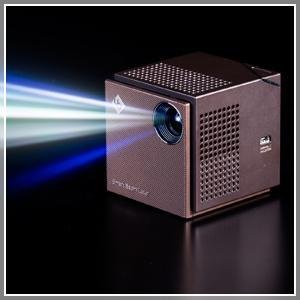
Laser Projectors Market 2019-2025 report supplies an analysis of the competitive picture and greatest players from the regional industry. On the competitive landscape, the global Laser Projectors market report consists of complete profiles of key market players, product information, capacity, sales and share by gross profits supplied for improved understanding.
Additionally, global Laser Projectors market forecast significantly underlines important segments for example types, significant improvements, forcing reliant on metropolitan areas, key businesses, and inventions. The Laser Projectors report also provides estimations of revenue and development rate on each industry section.
Free Sample of this Report at: http://www.marketresearchglobe.com/request-sample/937913
Key Players Analysis:
SONY, NEC, BenQ, Optoma, Panasonic, Christie, Z-laser, Barco, JmGO, ViewSonic, Phoebus Vision Opto-Elec, ACTO, Appotronics Corporation, Shanghai Sanxin
Key Inclusions:
Legislation and coverage varies;
Analysis of players price construction;
SWOT and PESTEL Analysis;
Types Applications;
Technology;
Key Developments and Tendencies;
Drivers, restraints, and chances;
Laser Projectors Market Analysis by Types:
Micro Laser Projectors
Large Laser Projectors
Get Exclusive Discount at: http://www.marketresearchglobe.com/check-discount/937913
Laser Projectors Market Analysis by Applications:
Enterprise Office
Family Entertainment
Education
Other
Leading Geographical Regions in Laser Projectors Market:
North America, Asia-Pacific, UK, Europe, Central & South America, Middle East & Africa
What exactly will be the influencing variables which are be cited at the Laser Projectors Market Report?
Laser Projectors report generates worth for regional players, which supplies standing for the existing players in addition to the newest entrants;
This will provide you an overall view of the Laser Projectors market aids in boosting your knowledge;
It provides a go-to-market solution to develop your company along with additional competitions that make it a beneficial report;
It helps to comprehend today's scenario of this Laser Projectors market while the report provides historical data concerning the industry space and future projections;
Customized market aquariums according to leading Laser Projectors geographic regions in the industry;
Enquiry More about the report: http://www.marketresearchglobe.com/send-an-enquiry/937913
Customization of this Report: This Laser Projectors report could be customized to the customer's requirements. Please contact our sales professional ([email protected]), we will ensure you obtain the report which works for your needs.
0 notes
Photo
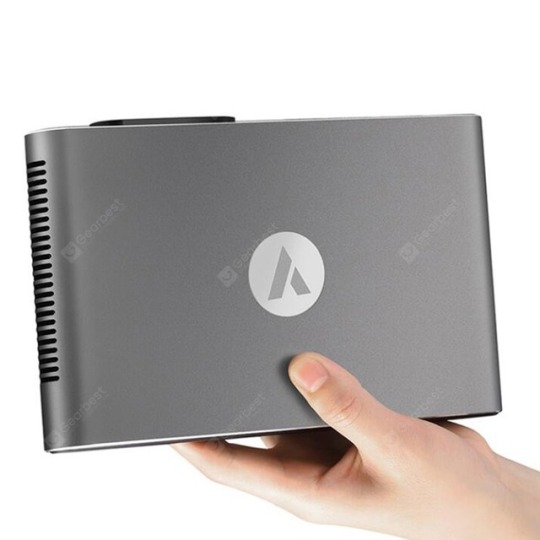
Gearbest: APPotronics A1 Laser Projector - 3.22-3.28 Coupon: Flash sale 100 pc Price: 699.99$ https://goo.gl/j2kP9i
0 notes
Link
#2025#AdvancedLaserPhosphorDisplay#ALPD#Appotronics#BMW#BMWGroup#BMWiVisionDee#BMWNeueKlasse#CES2023#DigitalEmotionalExperience#EInk#EInkPrism3#Futurride#head-updisplay#HUD#iVisionDee#LasVegas#laserprojector#mixedrealityslider#NeueKlass#phygital#Prism3#reductivedesign#sustainablemobility
0 notes